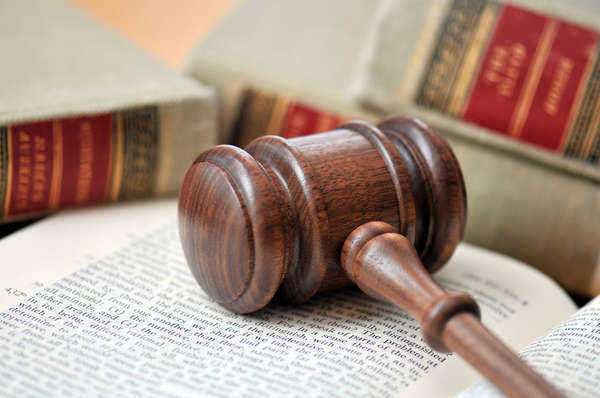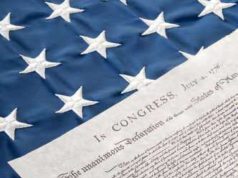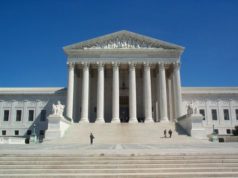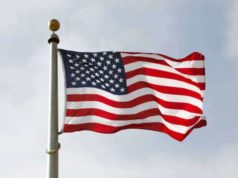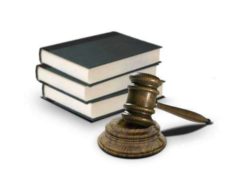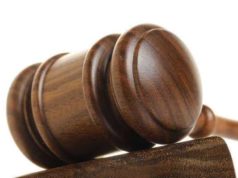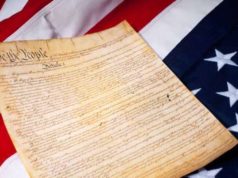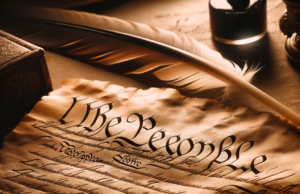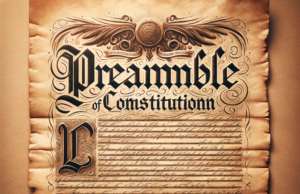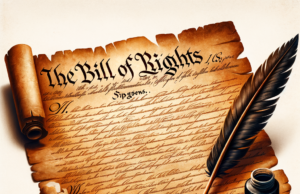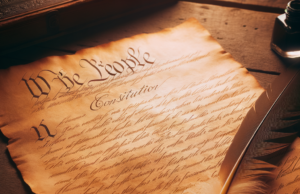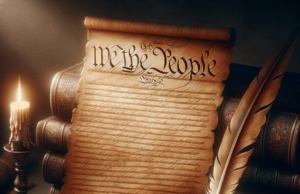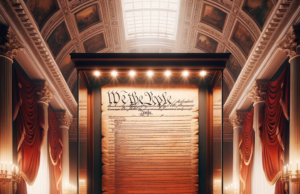Table of Contents
- 1 Introduction
- 2 Number of Judges on the Supreme Court
- 3 Appointment of the Chief Justice
- 4 Supreme Court Rules of Court and Appointments
- 5 Notable Decisions and Their Relationship to the Supreme Court Rules of Court and Appointments
- 6 Marbury v. Madison
- 7 McCulloch v. Maryland
- 8 Brown v. Board of Education
- 9 Conclusion
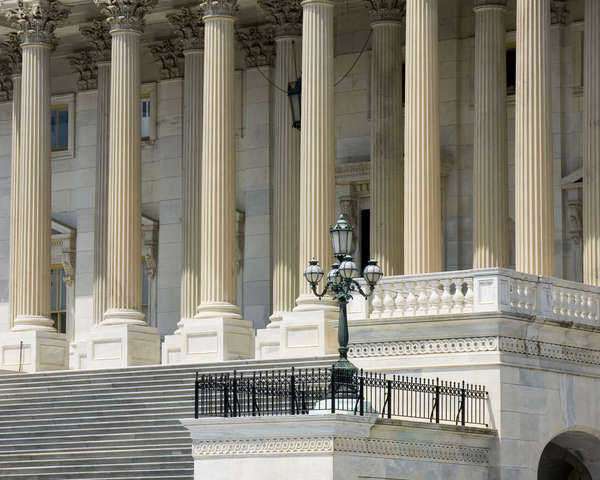
Introduction
The U.S. Supreme Court is one of the three branches of the federal government established by the Constitution. The court is a critical component of the American legal system and serves as the highest court in the country. It has the power of judicial review, which means it can interpret the Constitution and determine whether laws are constitutional or not. This article will discuss the Supreme Court rules of the court, number of judges and appointment of chief justice and how they relate to the decisions made by the court.
Number of Judges on the Supreme Court
The number of judges on the Supreme Court has been a hotly debated topic since the inception of the court. Article III of the Constitution does not specify the number of judges that should serve on the court, but it does give Congress the power to determine this number. The Judiciary Act of 1789 set the number of justices at six, which was later increased to seven, and then to nine in 1869. This number has remained the same ever since.
There have been proposals to increase the number of judges on the court. One such proposal was made by President Franklin D. Roosevelt in 1937. He proposed a plan that would allow him to appoint up to six additional justices to the court, which would have given him a majority of the court. This plan was met with significant opposition, and it failed to pass.
More recently, there have been proposals to increase the number of judges on the court due to concerns about the politicization of the court. Some progressives have suggested expanding the court to counter the conservative majority appointed by President Trump. However, this proposal has also faced significant opposition.
Appointment of the Chief Justice
The appointment of the Chief Justice of the Supreme Court is another critical aspect of the court’s operations. The Chief Justice is responsible for leading the court and managing its administrative functions. The President of the United States nominates the Chief Justice, and the Senate confirms the nomination.
There have been several notable appointments to the position of Chief Justice in the court’s history. One of the most famous was the appointment of Chief Justice John Marshall in 1801. He served for over three decades and is considered one of the most influential Chief Justices in the court’s history. Marshall was instrumental in establishing the principle of judicial review, which gave the court the power to declare laws unconstitutional.
Another notable appointment was that of Chief Justice Earl Warren in 1953. Warren served during a period of significant change in American history, including the Civil Rights Movement. He led the court in making several decisions that were critical to advancing civil rights, including Brown v. Board of Education, which declared segregation in public schools unconstitutional.
Supreme Court Rules of Court and Appointments
The Supreme Court has established rules of court that govern its operations. These rules cover a broad range of issues, including the procedures that must be followed when filing a case with the court, the briefing requirements for litigants, and oral argument procedures.
The Supreme Court’s rules of court also address the appointment of judges. The President of the United States nominates judges to the court, and the Senate must confirm these nominations. Once a judge is confirmed, they serve for life, or until they voluntarily retire or are impeached and removed from office.
The process of appointing Supreme Court Justices has become increasingly politicized in recent years. The Senate’s decision not to confirm President Obama’s nominee, Merrick Garland, in 2016, was a highly controversial move. Republicans argued that it was too close to the election, and they wanted to wait until after the election to make the appointment. Democrats accused Republicans of playing politics with the nomination process.
The appointment of Supreme Court Justices is also a critical issue in presidential elections. Many voters take the candidates’ views on Supreme Court appointments into consideration when deciding how to vote. President Trump’s appointment of three conservative Justices during his first term was a significant factor in his reelection.
Notable Decisions and Their Relationship to the Supreme Court Rules of Court and Appointments
The Supreme Court has made many notable decisions throughout its history. Some of these decisions have had a significant impact on American society and the country’s legal system. Here are a few examples of cases that relate to the court’s rules of court and appointments.
Marbury v. Madison
Marbury v. Madison, decided in 1803, is one of the most famous cases in the court’s history. It established the principle of judicial review, giving the court the power to declare laws unconstitutional. The case arose from a dispute over the appointment of William Marbury, who had been appointed Justice of the Peace in the District of Columbia.
Chief Justice John Marshall, writing for the court, held that Marbury had a right to his appointment but that the court did not have the authority to force the appointment. This decision was significant because it established the principle of judicial review and gave the Supreme Court the power to interpret the Constitution.
McCulloch v. Maryland
McCulloch v. Maryland, decided in 1819, is another significant case that relates to the Supreme Court’s rules of court and appointments. The case arose from a dispute over the constitutionality of a state tax on the Bank of the United States.
Chief Justice John Marshall, writing for the court, held that the state tax was unconstitutional because it interfered with the federal government’s power to regulate commerce. This decision was significant because it strengthened the federal government’s powers and established the principle of implied powers, which allows the federal government to take actions that are not specifically authorized by the Constitution but are necessary to carry out its functions.
Brown v. Board of Education
Brown v. Board of Education, decided in 1954, is one of the most significant civil rights cases in American history. The case arose from a dispute over the constitutionality of segregation in public schools.
Chief Justice Earl Warren, writing for the court, held that segregation in public schools was unconstitutional because it violated the Equal Protection Clause of the Fourteenth Amendment. This decision was significant because it struck down the “separate but equal” doctrine that had been established in Plessy v. Ferguson and set the stage for the Civil Rights Movement.
Conclusion
The Supreme Court’s rules of court and appointments are critical components of the court’s operations. The number of judges on the court, the appointment of the Chief Justice, and the appointment of judges to the court are all essential issues that are closely watched by the American public. Moreover, the decisions made by the court in cases like Marbury v. Madison, McCulloch v. Maryland, and Brown v. Board of Education have had a significant impact on the legal system, American society, and the world. The Supreme Court plays a critical role in our democracy, and its importance cannot be overstated.
The stipulations contained for the Supreme Court in the Constitution are, like much else to be found in the document, broadly and briefly defined. Structural and procedural questions of the Court’s nature, for instance, are largely overlooked by the relevant provision, Article III, “The Judicial Branch”, which instead sets out the basic nature of the Court.
Practical questions of Court procedure, such as the number of Justices to be included and the role of the Chief Justice, have largely been accorded to Congress and to the Court itself. These provisions began with the first Congressional legislation, the Judiciary Act of 1789, created three circuits (Eastern, Southern, and Middle) and within these thirteen districts. The changing needs of the country and evolution of its political culture have led to changes in established practice.
As with other questions, the number of Justices in the Supreme Court is not dealt with the Constitution. When the Court was first established, it consisted of six members, comprising the Supreme Court Chief Justice and five other Associate Justices. Without any fixed requirement for this number, however, it frequently changed, with six shifts in all. The last such change, in 1869, set the number at nine, which has continued in American judicial practice up to the present.
The appointment of the Supreme Court Chief Justice is accorded particular weight in the American political scene due to the influence which the individual selected is likely to wield and the lengthy term which he or she is likely to hold. This precedent was established for the Court by the fourth Chief Justice appointed, John Marshall, who presided over the Court for a still unmatched thirty-four-year term, during which he reconfigured the Supreme Court as a decisively important part of the American political scene. As with the subordinate Associate Justices, the Supreme Court Chief Justice is nominated by the President and approved by Congressional voting.
Despite the President’s decisive role in selecting nominees for Chief Justice, at the root of the office is a Constitutional stipulation for the limitation of executive branch power. Article III of the Constitution, as is generally devoted to the subject of “The Judicial Branch”, does not consider the existence of a Chief Justice or any other hierarchically defined section of the Court. The Supreme Court Chief Justice office is established, rather, by the Constitution’s first Article, in Clause 6 of Section 3, with its allocation of the responsibility for presiding over Presidential impeachments to the “chief justice,” to which there is no other reference.
Without any preconditions being set on the relationship between the Supreme Court Chief Justice and the Associate Justices, the selection of a nominee may either elevate one of the Associate Justices to the position or pull in an outside nominee who has not yet served on the bench. The death of a Supreme Court Chief Justice can be met with a provisional replacement by one of the currently sitting Associate Justices until the President and Congress succeed in officially placing a new person in the position.


